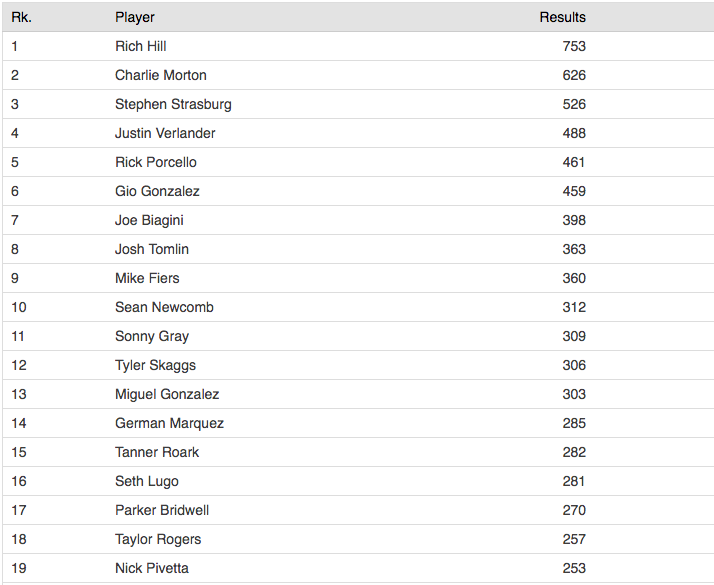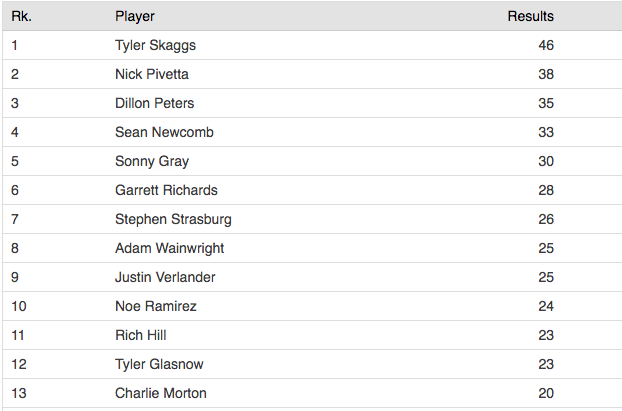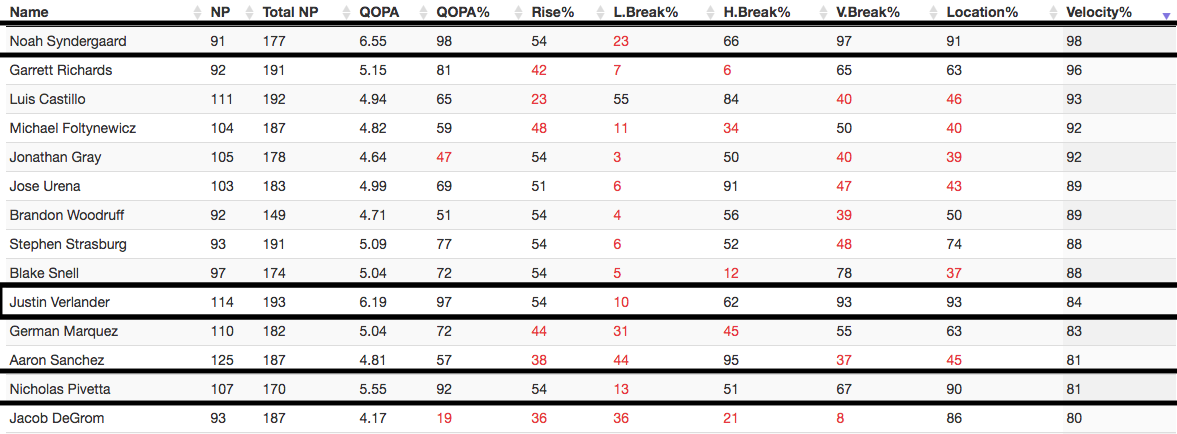(Photo by Kyle Ross/Icon Sportswire)
Nick Pivetta has undergone quite the transformation since joining the Philadelphia Phillies system in the back half of the 2016 season. He severely underperformed as a 2013 4th round pick of the Washington Nationals. His final three starts in that system sum up most of his career at his first stop. Those games included a -4.3 K-BB%, 2.40 HR/9, and a large dose of prospect fatigue. Pivetta looked like he was ready to fall off a cliff until the Phillies took a shot on an interdivisional trade with that saw closer Jonathon Papelbon heading to the nation’s capital. Now, everyone knows the precipice that Papelbon dove off of at the end of his career, but prior to the move he had a 39 save season with beneficial ratios. Pivetta was heading to AA without showing any improvement in BB% or K% despite carrying a positive SwStr% in the minors.
The initial transition to Philadelphia’s system involved more struggles. It wasn’t until the start of 2016 when things started to get rolling for the 6’5″ JuCo arm from Canada. Pivetta was finally able to provide a K% >20% in 148.2 IP across AA and AAA. His peripherals still were not special by any means, but once he hit AAA in 2017 the strikeouts were paired with higher velocity, incredible command, and a lack of barrels exemplified by his 2.5% HR/FB and 12% LD% in a small sample. The 24-year-old was granted a call-up to the majors after only 5 starts but did not provide the upside he did in those 32 special innings. Again, it seems that Pivetta was just a pipe dream created by his size, velocity, and sporadic breaking ball.
Up until this offseason there really was not much to buy into, but wait because this is where it gets good. Pivetta is known for his fastball and slider but he also has been working in a solid curveball this season. The curveball and fastball are important pitches when it comes to spin rate because they have an opposite rotation. While using the Statcast search tool on Baseball Savant, you can see which curveballs have the highest spin rates to create deception between the two offerings. Higher spin rates on a curveball can mean more movement but more importantly, it hides the forward rotation of the pitch. Here’s a great display of their spin courtesy of Driveline Baseball:
Fastball
[gfycat data_id=”ColossalPalatableEskimodog”]
Curveball
[gfycat data_id=”HelplessPortlyBordercollie”]
Take an outlier like Rich Hill for example. He basically throws fastballs up in the zone and filthy, spinning curveballs to make batter’s swing and miss at a very high rate. Last season Hill was able to achieve a spin rate of >2700 RPM on 86% of his offerings and his 753 was easily the highest number of pitches that fit this parameter. This is what gives him such deception even though the hitter knows he is getting one of only two options. Hill is able to keep the batter on their toes by hiding the forward spin of his curve at an extremely high level.

Stephen Strasburg, Gio Gonzalez, Justin Verlander, Charlie Morton, are all known for having some deadly curveballs, all found themselves Top 6 on this list. Nick Pivetta was able to achieve this result 253 times last season, which was good for 67% of his total CB usage and 19th overall. He is showing consistency in that high rate this season with 62% of his 61 Uncle Charlie’s generating >2700 RPM. Strasburg is only at ≈46% after 56 pitches, Verlander is at 64%, and Rich Hill again dominating at 92%. Needless to say, Pivetta finds himself in some pretty good company over the past two seasons.

Looking deeper into the repertoire, the quality of Pivetta’s pitches thus far has been top notch. Since the curveball was analyzed earlier, it’s time to look deeper into the fastball. QOPBaseball.com has put together a database of player’s pitches and their percentile ranking by various components such as horizontal/vertical break, velocity, location, and more. Looking at the pitchers with samples larger than 80 fastballs, Pivetta is one of only three starters in the Top 20% for velocity and Top 10% in location. The other two that currently fit these parameters are Justin Verlander and Noah Syndergaard. If you extend the threshold to Top 20% in each component the only two names added to this list are Jacob deGrom and Jameson Taillon, who is very interesting in his own right. Again, Pivetta is showing up next to some of the league’s elite arm talent. Pairing this kind of unique ability with a curveball that is dropping out of the zone for more swinging strikes this season is a huge reason why he is finally showcasing the hidden upside that seemed as if it had disappeared earlier in his career.

As I mentioned before, Pivetta is mainly known for his fastball and slider. His best secondary last year was, in fact, the slide piece which resulted in a 17% SwStr%, as well the highest O-Swing%, Swing%, and lowest Contact% of any of his offerings. That combination of statistics is deadly and he seems to be mixing up his pitches a lot more this year to create even more deception in his repertoire.
Nick Pivetta has traveled a long, arduous path since being drafted in 2013. Now at 25-years-old, he is poised to have a career year as all three pitches are cooking with full gas. Even though he has only made two starts, it is easy to see the changes he made this offseason with the new regime in Philadelphia. Working on fastball elevation has increased his playability with pitch tunneling and Pivetta can now throw that accurate fastball high in the zone while dropping the curveball off the plate for more whiffs. The stars are aligned for a breakout and this could be the first pitcher scooped off the wire this season that sticks on fantasy rosters all year.


Great stuff Paul!!!
Would you drop Eduardo Rodriguez or luiz gohara for him?
Gohara is tough because he’s on the MILB DL… I would probably drop E-Rod for him because I see a similar upside in both but way more injury risk with Eduardo.
Thank you for introducing me to QOPBaseball and writing this piece!. I really want to jump on the Pivetta hype train, but I want to play devil’s advocate here. If you compare Pivetta’s 2017 and 2018 components on QOPBaseball, you’d realize that his QOPA last year was already good and the component percentiles are similar to this years’ (good fastball but mediocre for other pitches, especially location). In other words, I am not seeing enough of qualitative change that convinces me this year’s Pivetta will be dramatically better than last year’s. Granted, I think he was unlucky last year, but I don’t think his performance so far this year is sustainable. I’d like to hear your thought.